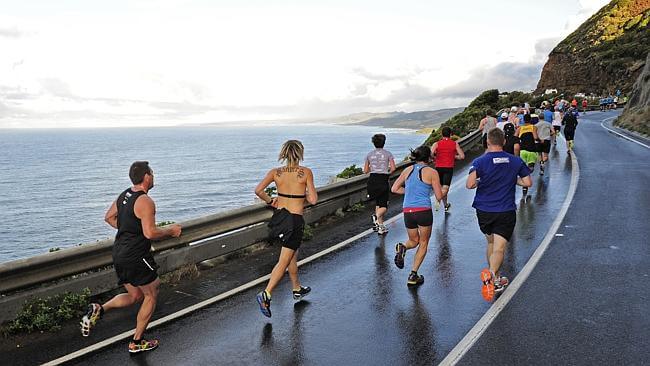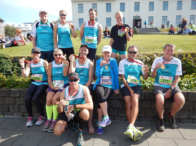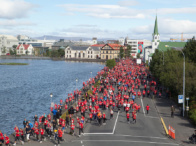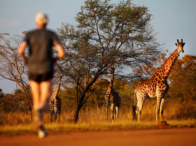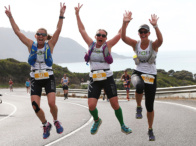The Great Ocean Road Marathon is a race that promises not just a challenge, but an unforgettable journey along one of the world’s most scenic coastal routes.
Known for its breathtaking views, diverse terrain, and vibrant community spirit, this marathon offers more than just a typical race—it’s an opportunity to immerse yourself in one of Australia’s most iconic attractions.
Our team at Travelling Fit have organised Great Ocean Road Marathon travel packages since 2017 and knows all there is to know about this historic race.
Keep reading our guide to learn all of the important race information for this event.
Overview of the Great Ocean Road Marathon
Quick Facts
2024 Date | May 19th, 2024 |
Total Participants | 1,500 |
Registration Cut Of Date | Tuesday 30 April 2024 5pm or unless sold out prior |
Required Qualifying Time | N/A |
Race types and distances
Race Type | Distance |
Ultra Marathon | 60 km |
Marathon | 44 km |
Half Marathon | 23 km |
Paradise Run | 14 km |
Great Ocean Road Marathon elevation
The Great Ocean Road Marathon has an elevation gain of around 488 metres (this can change slightly depending on the year).
The starting elevation is 17 metres above sea level and the race’s maximum elevation level is around 67 metres.
Check out the graph below for more specific information about the race’s elevation changes.

Great Ocean Road Marathon route
The Great Ocean Road Marathon starts at the Lorne SLSC Car Park, greeting runners with gentle inclines and declines, setting a calm pace for the initial 6km. This relatively flat section allows participants to find their rhythm and soak in the coastal ambience before the landscape shifts.
As runners approach the 6-7km mark, a steep descent ushers them towards Cumberland River Beach, introducing the first significant challenge. At the 7km point, the serene beach marks the beginning of three demanding ascents that will test resilience and strength. Over the next 2.5km, participants face a rigorous 54-metre elevation gain, culminating at the Mount Defiance lookout. Here, runners can steal a moment to enjoy the panoramic views before a steep descent leads them to the 11km marker.
The journey from 11km to 22.5km unfolds over undulating hills, less intense but equally engaging, as the route curves along the coast. The picturesque town of Wye River greets runners at the 16.5km mark, offering a scenic change and community cheer.
Beyond Wye River, a 5.5km stretch leads to Kennett River, the starting point for the second challenging climb. Over 2.2km, athletes ascend 44 metres, navigating a steep path before an 800-metre descent provides brief respite. But the relief is short-lived, as the third and final major ascent looms, guiding runners up to the Cape Patton lookout. This nearly 2km climb peaks at 67 metres above sea level, rewarding runners with breathtaking views and the satisfaction of conquering the highest point of the race.
From Cape Patton, a steep descent brings the weary but determined to Carlsbrook Creek. Though energy may wane, the route eases as runners set their sights on Apollo Bay, visible in the distance. The final 10km stretch features milder, rolling hills, maintaining the marathon’s character while offering glimpses of the approaching finish line.
As participants enter the final leg, the town of Apollo Bay welcomes them with open arms, marking the end of a remarkable journey at the Apollo Bay Hotel. Runners cross the finish line with a sense of accomplishment, having navigated the scenic and challenging course of Australia’s Great Ocean Road, marking the end of a memorable marathon journey.
Great Ocean Road Marathon map
Check out the map below to see the route for the marathon.
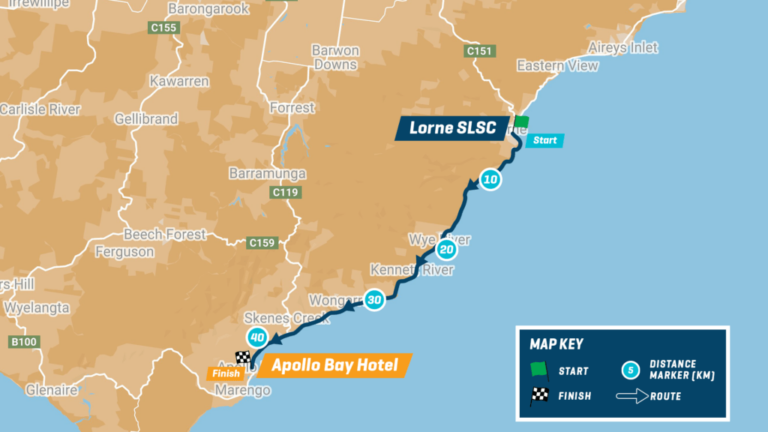
Great Ocean Road Marathon difficulty
The Great Ocean Road Marathon, known for its stunning coastal views, presents a unique set of challenges that may affect its difficulty level for different runners. The course’s difficulty can be attributed to several factors, including its undulating terrain, variable weather conditions, and the cumulative elevation gain.
For seasoned marathoners accustomed to varied terrains and elevation changes, the Great Ocean Road Marathon may present an enjoyable challenge. For newcomers or those less accustomed to hilly courses, it may prove more demanding. Proper training, particularly focusing on hill runs and long-distance endurance, can help prepare all runners for this unique event.
Ultimately, while the Great Ocean Road Marathon poses certain challenges, its difficulty is subjective and varies based on individual experience, preparation, and resilience. With the right training and mindset, participants can tackle this scenic course and enjoy all the beauty and accomplishment it offers.
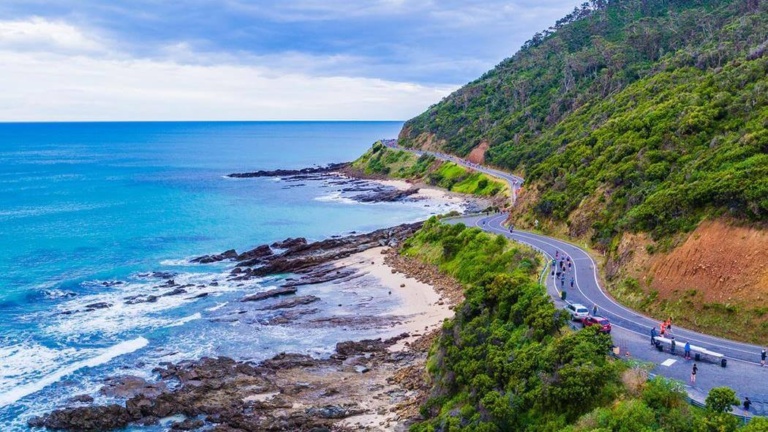
Great Ocean Road Marathon drink stations
There will be 12 drink stations throughout the Great Ocean Road Marathon Course.
Water will be provided on the course as well as Science in Sport Drinks.
Distance | Items Provided |
Start Line | Water |
2.5km | Water |
5km | Water |
10.7km | Water / Science in Sport drinks |
15.4km | Water / Science in Sport drinks |
21.8km | Water |
26.6km | Water |
31.1km | Water / Science in Sport / Jelly beans |
36.2km | Water / Science in Sport / Jelly beans |
39.4km | Water / Science in Sport drink / Jelly beans |
43.1km | Water / Science in Sport drink / Jelly beans |
Finish Line | Water / Science in Sport drink / Bananas |
Great Ocean Road Marathon accommodation - Best place to stay
For participants of the Great Ocean Road Marathon looking for a comfortable and convenient place to stay, Cumberland Lorne Resort is an excellent option and is included in our Great Ocean Road Marathon travel packages.
This beachfront resort is renowned for its spacious and modern apartments, each featuring a private balcony, outdoor furniture, and a corner spa bath, along with full kitchen and laundry facilities.
It’s positioned directly across from Louttit Bay, nestled among Lorne’s vibrant restaurants and boutiques, offering stunning views and a friendly atmosphere.
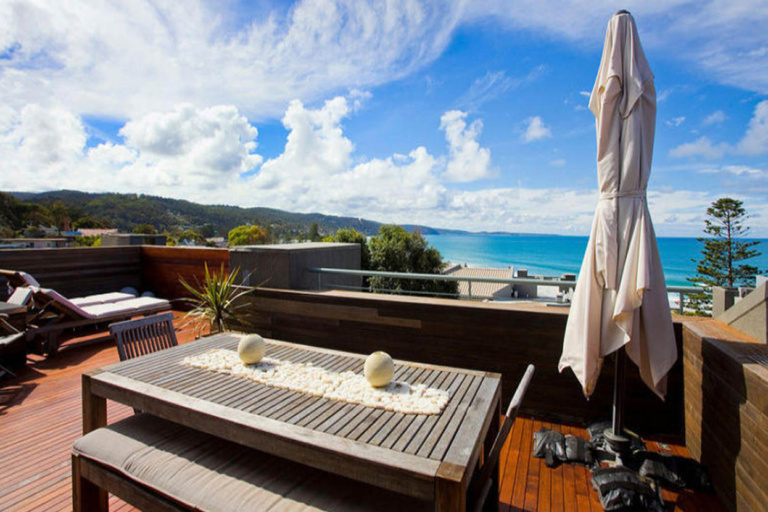
Great Ocean Road Marathon training tips
Training for the Great Ocean Road Marathon requires a well-rounded approach, focusing on endurance, strength, and mental preparedness. Here are essential training tips to help you prepare for this unique and challenging event:
Build endurance gradually
Start your training with a solid base of mileage and gradually increase your long runs. Incorporate weekly long runs into your regimen to build stamina, ensuring you’re comfortable running for extended periods.
Hill workouts
Given the race’s undulating terrain, hill training is crucial. Include hill repeats in your weekly training to improve strength and endurance in your legs. This will prepare you for the marathon’s steep ascents and descents.
Cross-training
Engage in cross-training activities such as cycling, swimming, or strength training. This can enhance your overall fitness, reduce the risk of injury, and provide a mental break from running.
Pace strategy
Familiarise yourself with the marathon’s elevation profile and plan your race pace accordingly. Practice running at your planned marathon pace, especially on hillier routes, to understand how the course’s varying elevations will affect your speed.
Nutrition and hydration
Experiment with different hydration and nutrition strategies during your long runs to find what works best for you. Understanding your body’s needs will help you plan effectively for race day.
Mental preparation
Visualise the course and your race strategy. Mental resilience is key, especially for tackling the marathon’s challenging sections. Practice positive self-talk and stress-reduction techniques to keep your mind focused and calm.
Recovery and rest
Incorporate rest days and taper your training in the weeks leading up to the marathon. Prioritise sleep and recovery to ensure your body is well-rested and at peak condition for race day.
Simulate race conditions
Try to simulate race day conditions during your training, including starting your long runs at the same time the race begins. This helps your body adjust to the timing and conditions you will face.
By following these training tips and preparing both physically and mentally, you’ll be well-equipped to tackle the Great Ocean Road Marathon’s unique challenges and enjoy the stunning scenery along the way.
Want to secure a great deal on race entry and accommodation?
We offer 3-day / 2-night Great Ocean Road Marathon travel packages that take the stress out of organising logistics for this event.
- Guaranteed race entry (runners only)
- 3 Days / 2 Night’s accommodation at Cumberland Lorne
- Race day transfers (runners only)
- Invite to Travelling Fit’s Great Ocean Road Marathon closed Facebook group exclusive to Travelling Fit clients
We can secure 1-3 bed rooms with either an ocean or garden view depending on budget and needs.
Check out our marathon, ultra-marathon and half marathon packages to learn more!

